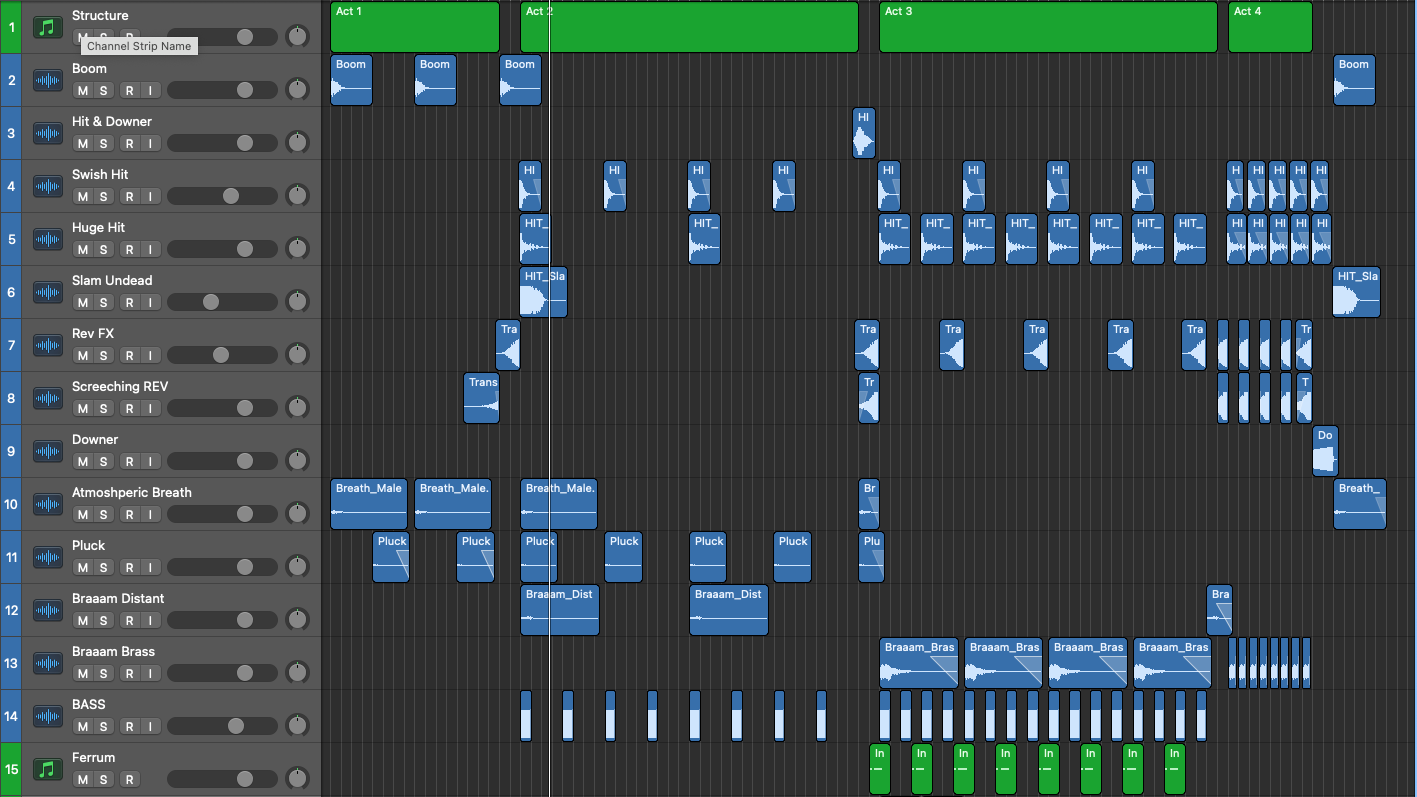In this post, I show you how you can sketch out an entire Trailer music cue in a matter of minutes using one-shots.
What Are One-shots
One-shots are drag-and-drop samples that you can drop into your DAW (digital audio workstation).
Put simply, they are audio files of cool sounds that we can use as composers to create cinematic effects.
Sketch a Track Quickly
Have any of you ever watched Bob Ross paint a landscape?
If you have, you know exactly what I am about to say.
He always starts by sketching out the image using gestures that will form the landscape.
No fine details.
By doing this, he is able to work quickly and easily.
The same is true of writing trailer music. If you sketch out the structure and main elements first then the details tend to fall into place.
Who wouldn't want to make writing trailer music quick and easy?
So, let's translate this to composing. You can sketch a trailer track out quickly by using regions, markers or chord progressions. Whatever it takes to give you a general idea of the track's structure.


Use Different Hits for Impact
I often use trailer hits to form the overall structure of the trailer track. By doing this I can see the different acts and other important edit points, like the stopdowns between each act, clearly.
Start with Sub-Booms
I like to start with sub-booms because they give us immediate impact and scale but without being too loud or in your face.
This is because the sub-boom implies that something huge has just happened, but in the distance. Like a bomb going off many miles away. It lets the listener know that something is coming.
I use these in Act 1 and at the very end because all the other trailer hits I use will have a lot of sub-frequencies within them, and if I layer those hits the mix will become muddy very quickly.
Next, Bring in Your Big Hits
Once you move into Act 2, start using bigger-sounding trailer hits to mark the beginning of Acts 2 and 3. Don't just use them at the start of the acts but pepper them throughout.
In act 2, think about using those big hits every 8 bars with a smaller-sounding hit every 4 bars.
In act 3, use those big hits every 4 bars with medium hits every 2 bars.
In act 4, use the big hits every 2, or even every single bar. This makes the last act, the finale, that much more powerful and allows the editor to cut to those hits with ease.
By now your track should be shaping up nicely.

Use FX to Shape the Acts
Transition effects are kind of like glue. They bring all those disparate elements together and make for a much more cohesive track.
I like to use reverse effects, downers, and risers to glue my track together.
I use the reverse effects (like suck-backs) to bring out the stop-downs and big hits. I then use risers to bring the builds to each individual act.

Use Tonal FX for Atmosphere
This is not necessarily part of the sketching process.
If, however, you know what genre you are writing the track in then you can start to use tonal effects to create atmosphere and give a better idea of how the track is going to sound.
The genre I am writing in will determine what type of tonal effects I reach for. Although there are a couple of sounds that you can safely add to your sketch that will not necessarily dictate the genre of the track.
Braaams are a pretty good start to add to each act. I like to think of them in terms of hits - the closer to the end the braaam is sounding, then the bigger and more detailed the sound should be.
Pings and plucks are a great way to give another level of emphasis to the start of acts and edit points without adding anything that could potentially muddy your mix.
As a last measure, I like to add bass samples and possibly drones. These two elements can really ground the track and create an incredibly solid foundation for the rest of your harmonic and melodic material.

Work Quickly
This is really important. Working quickly stops you getting bogged down in indecision and overwhelmed by choice: "Ooh, which sample is best? Oh, that bass sound isn't quite right!"
All of these thoughts must be shunted out of your mind.
For now, it's not about the details. Your focus is gesture; samples that imply the shape and sound of your track.
If you would like to give it a try using the same amazing samples I used then grab my FREE Trailer Music Toolkit.







